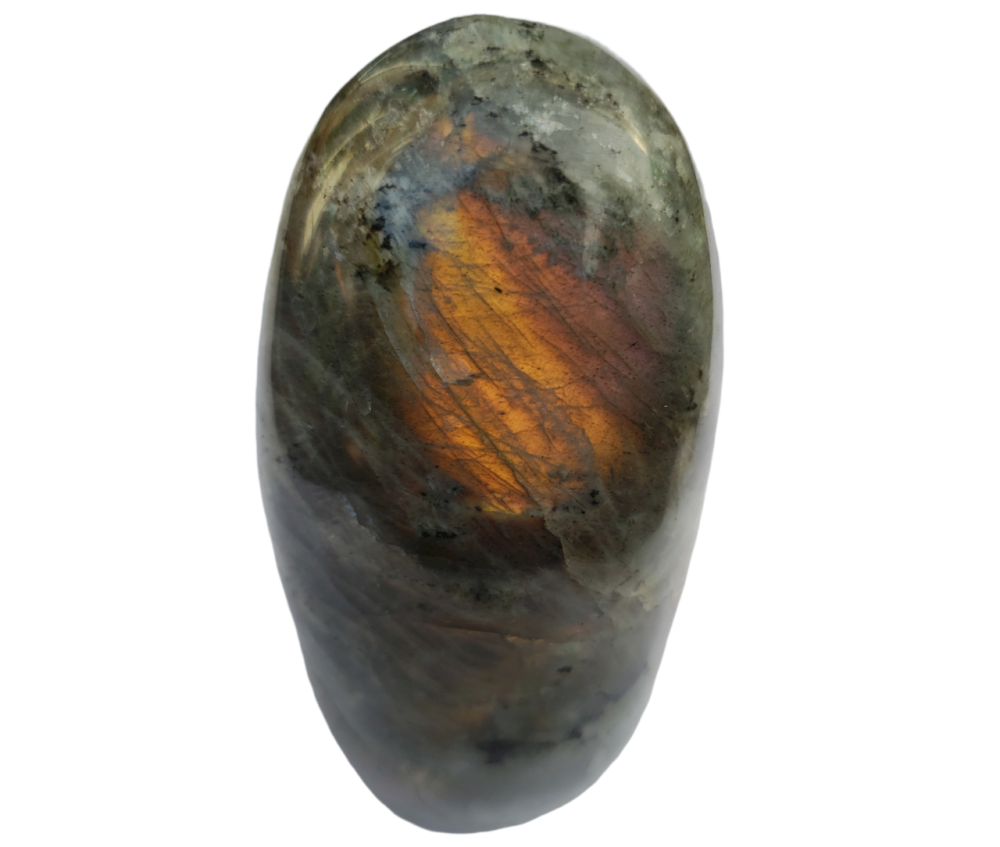We use cookies to make your experience better.
TimmersGems has a new website, existing customers also need to register again.
“Purple” Labardorite from Madagascar.
Recently the so-called “Purple” Labradorite was discovered. Personally, I think you have to have “a lot of imagination” to make it purple. Because there is simply not much purple in it. However, the species is different from the Kalssic Labardorite from Madagascar, it is much lighter in color, "a bit grayish"
Availability:
In stock
SKU
11507
The mineral labradorite is a calcium sodium aluminum tectosilicate with the chemical formula (Ca,Na)(Si,Al)4O8. It belongs to the feldspars. The colorless, white, gray or light green labradorite has a glass luster, a white stripe color, a perfect cleavage according to crystal plane [001] and a good cleavage according to [010]. The average density is 2.69 and the hardness is 7. The crystal system is triclinic and the mineral is neither radioactive nor magnetic. The characteristic play of colors, called labradorization, is caused by the light refracting on microscopic crystals of various dark minerals, which lie on the cleavage faces. Labradorite usually appears shapeless or granular; the mineral rarely, if ever, forms crystals. Labradorite is undoubtedly the best known of the precious stones that display such a play of colours. When the stone is cut judiciously, the play of colors comes into its own even better. But also on the rough chunks the beautiful labradorisation can often be seen. There are few minerals that change color as strongly as labradorite. The name of the mineral labradorite is derived from the Labrador Peninsula in Canada, where it was first described. The stone was discovered in 1780 on the east coast of the Labrador Peninsula by a Father and named after the island. He found a large number of boulders with a striking gray color that changed color to dark blue and green shades when turned. This find aroused great interest among scientists at the time and it was determined that this was a soda lime feldspar or plagioclase. Labradorite is a common feldspar in metamorphic and igneous rocks as pegmatite. It is part of the plagioclase series (albite-anorthite). Labradorite's type location is in Canada's Labrador Peninsula. Deposits can also be found in Australia, Madagascar, Mexico, Russia, the United States and Finland.
| Country of Manufacture | Madagascar |
|---|












